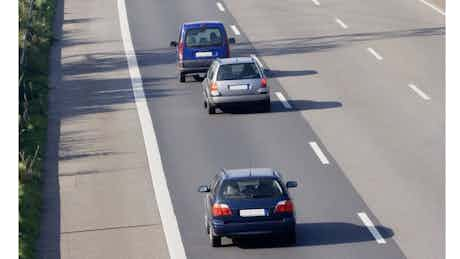What is a hard shoulder?
October 13, 2022 by carwow staff

Want to know what a hard shoulder is, and what the rules are for using hard shoulders? We have the answers
It used to be the case that almost every motorway in the country had a hard shoulder. The rise of smart motorways means that this is no longer the case to an extent, but hard shoulders are still important lanes, and it’s worth knowing what the rules are for using them.
What is a hard shoulder?
A hard shoulder is an emergency lane that runs along the left-hand side of a motorway carriageway.
The division between the hard shoulder and the rest of the motorway is indicated by a solid white line. The standard width for a hard shoulder in the UK is 3.3 metres.
Which types of motorway have hard shoulders?
Hard shoulders used to be a feature of almost every type of motorway, but the advent of smart motorways means this is no longer the case in all instances.
Smart motorways come in three different forms:
All-lane running smart motorways
These have no hard shoulder, as the lane that previously fulfilled this role has been converted to an additional traffic lane on a permanent basis.
Controlled motorways
These have a permanent hard shoulder; the ‘smart’ element comes in with variable speed limits, which are set based on traffic, road and weather conditions.
Dynamic smart motorways
These have a hard shoulder lane that acts and should be treated in the same way as a conventional hard shoulder during normal times, but when traffic becomes heavy it is opened up into an additional traffic lane.
Our guide to smart motorways has more information on this topic.

When should I use a motorway hard shoulder?
Hard shoulders are only designed to be used in an emergency, typically when a vehicle has broken down, or if there has been a collision – they should not be stopped on if someone in the car feels nauseous, needs to go to the loo, or you are lost and need to check directions – come off the motorway at the nearest exit or service area if you have a non-emergency reason to stop.
Do not attempt to change a tyre on the hard shoulder – it is too dangerous. Call a recovery firm instead.
Hard shoulders on dynamic motorways should only be used as a driving lane when signs explicitly indicate they should be used as such – otherwise the same rules as outlined in the paragraph above apply.
How to stop on a hard shoulder?
The likelihood is that you will not have much or any warning that you will need to use the hard shoulder – that is the nature of emergencies. Nonetheless, use the car’s indicators and move across to the shoulder as carefully as possible.
Get as far over to the left of the hard shoulder as you can, while leaving enough room to open the doors on the left-hand side of the car.
Put your car’s handbrake and hazard warning lights on and turn the steering wheel so the wheels are pointed to the left. Should your car be struck by another vehicle, this will lessen the chances of it being propelled into motorway traffic.
Get out of the car using the left-hand doors – the driver will need to climb over the car’s central console to do this. Then get behind the crash barrier, keeping an eye out for debris and uneven surfaces as you do so.
Our guide on what to do if you break down on a motorway has more information.
Cars Change? Carwow!
Looking for a new set of wheels? With Carwow you can sell your car quickly and for a fair price – as well as find great offers on your next one. Whether you’re looking to buy a car brand new, are after something used or you want to explore car leasing options, Carwow is your one stop shop for new car deals.















